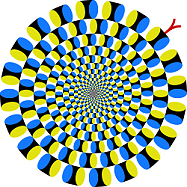The 11th Congress of the International Colour Association (AIC) 2009
University of New South Wales, Sydney, Australia
September 29, 2009
A brief classfication of colour illusions
by Akiyoshi Kitaoka
since September 21, 2009 Manuscript Australia
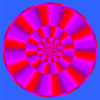 There are a variety of colour illusions.
There are a variety of colour illusions. 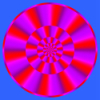
For example,
"Good complexion illusion"
Pale complexion can be improved by color assimilation and contrast.
Copyright Akiyoshi .Kitaoka 2007 (March 10)
(Colour assimilation)
"School entrance ceremony"
Although sakura are drawn with gray, they appear to be tinted pink.
Copyright Akiyoshi .Kitaoka 2007 (March 2)
You can confirm that the petals are really gray if you place the cursor on the image.
(Colour contrast)
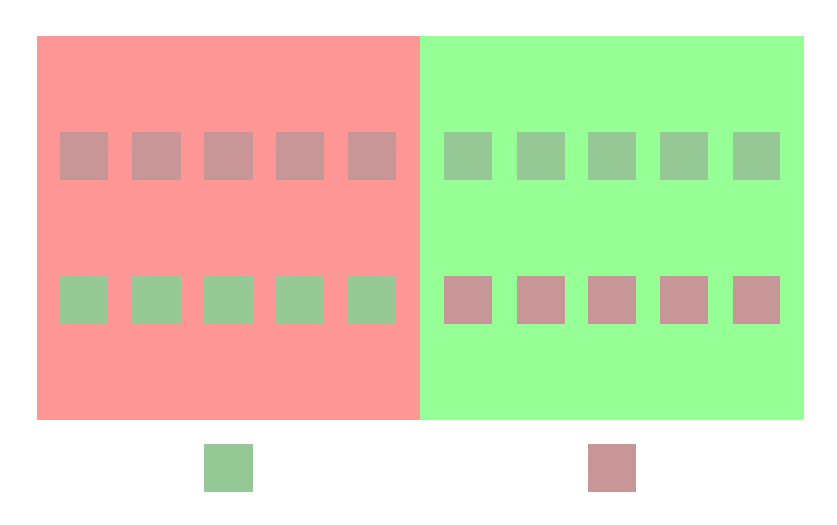
"Sakai's color contrast"
The squares of the upper row appear to be gray, but they are tinted as shown in the lower row that exchanges between the left fives and the right fives. This illusion is based upon a finding of Kasumi Sakai's graduational thesis (2003, Department of Psychology, Ritsumeikan University) entitled "Color representation by Land's retinex theory and Belsey's hypothesis" (in Japanese).
Copyright A.Kitaoka 2002
(Colour contrast or colour constancy)
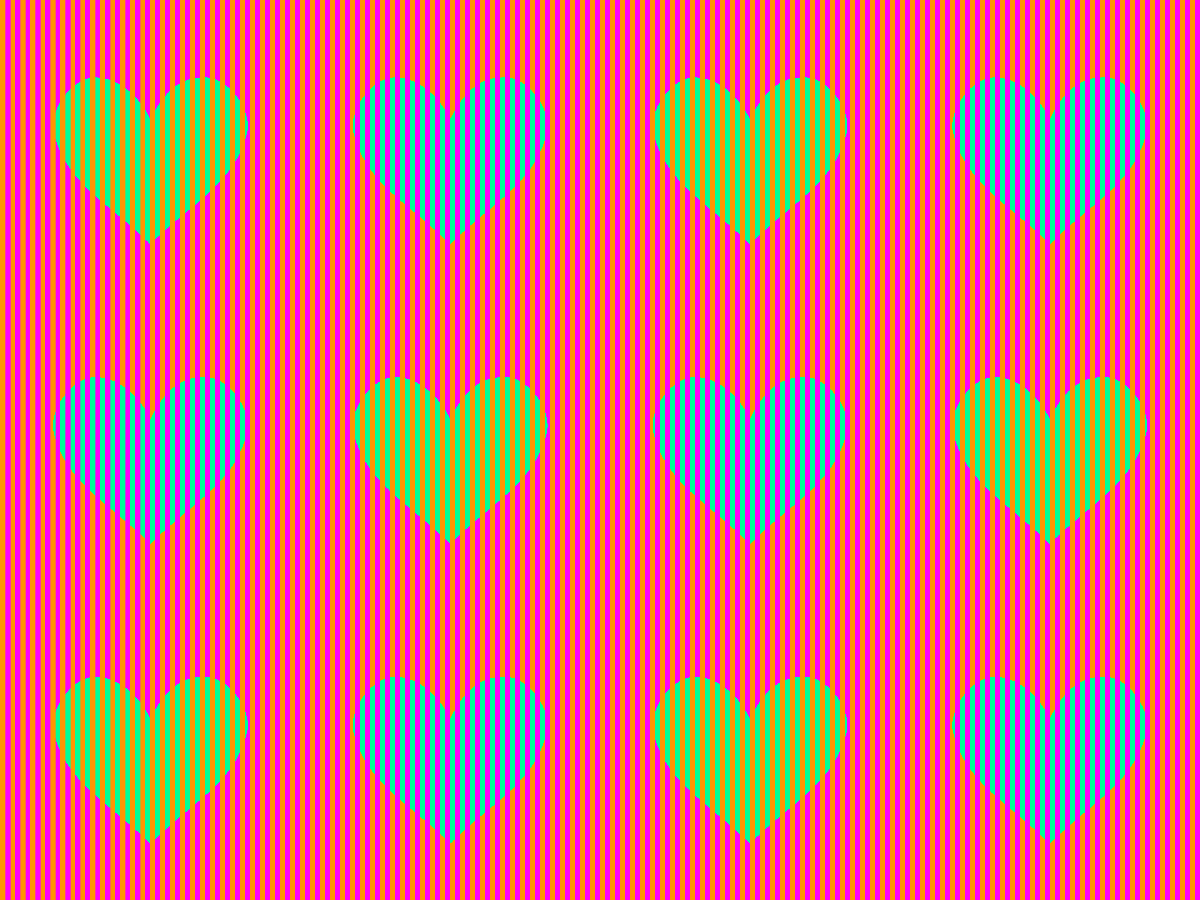
"Striped green
and blue hearts"
There appear to be hearts of light green or light blue. Actually, they are identical (R=0, G=255, B=150).
Copyright Akiyoshi Kitaoka 2009 (May 24)
(Chromatic White's effect)
"The ground family"
The left pigeon appears to be yellowish, but the color is the same white as the right.
Copyright Akiyoshi .Kitaoka 2007 (March 12)
(Chromatic White's effect)
"Guruguru 6"
There appear to be two different colors in inner rings, though they are the same as each other.
Copyright Akiyoshi .Kitaoka 2007 (January 15)
(Colour assimilation and remote colour contrast)
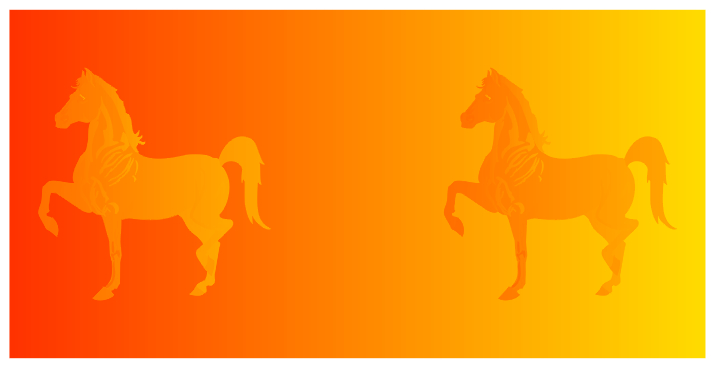
"Horses"
It appears as if there were a yellow horse and a red one, but they are identical in color actually.
Copyright Akiyoshi Kitaoka 2005 (August 18) (using a clipart provided by CoreDRAW 9)
(Colour constancy)

"Four areas"
The leftmost square is physically the same colour (gradient) as the neighboring one and the rightmost square is the same colour as the neighboring one, though they do not appear so.
Copyright Akiyoshi Kitaoka 2006 (May 1)
(Colour constancy)
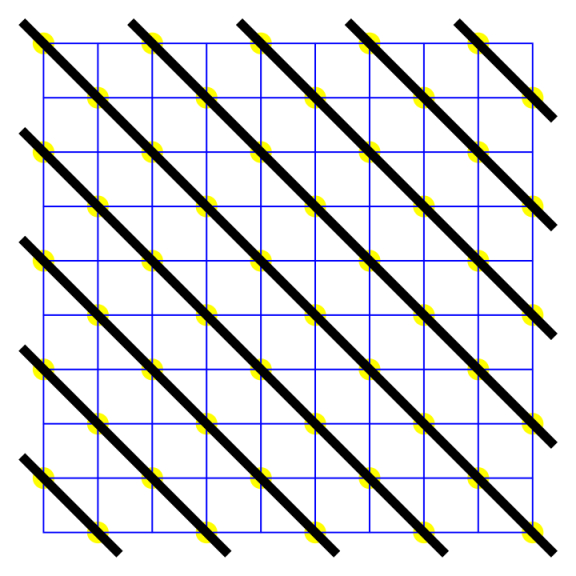
"Colored ray illusion"
Illusory yellow lines appear to run obliquely over the homogeneously white background.
Copyright Akiyoshi Kitaoka 2001
(Colour completion)
Kitaoka, A. (2001). Illusion designology (7): Illusory light perception that cannot be explained by the Fourier analysis. Nikkei Science, 31(8), 66-68 (in Japanese).
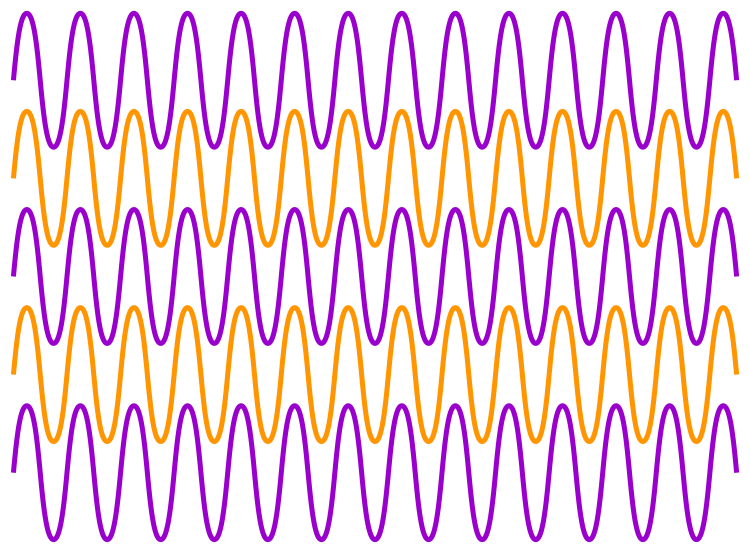
"Wave-line color illusion" (Sohmiya's illusion)
(Sohmiya, S. (2007) A wave-line colour illusion. Perception, 36, 1396-1398)
The white background behind the orange waves appears to be tinted orange.
produced by Akiyoshi Kitaoka 2009 (February 19)
(Colour completion)
 Colour illusions have the counterparts in brightness/lightness illusions.
Colour illusions have the counterparts in brightness/lightness illusions. 
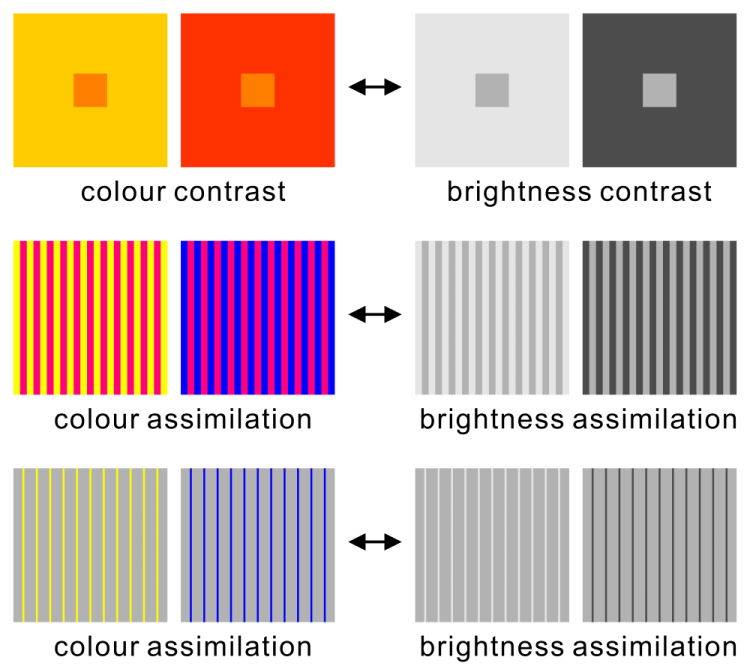
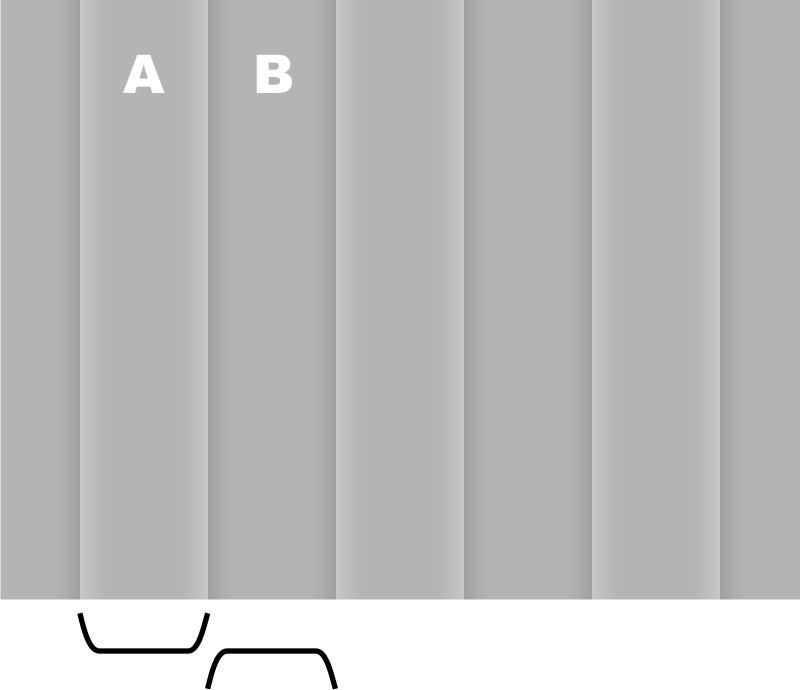
"Craik-O'Brien-Cornsweet effect"
Area "A" appears to be lighter than area "B", though they are the same luminance.
produced by Akiyoshi Kitaoka 2009 (March 17)
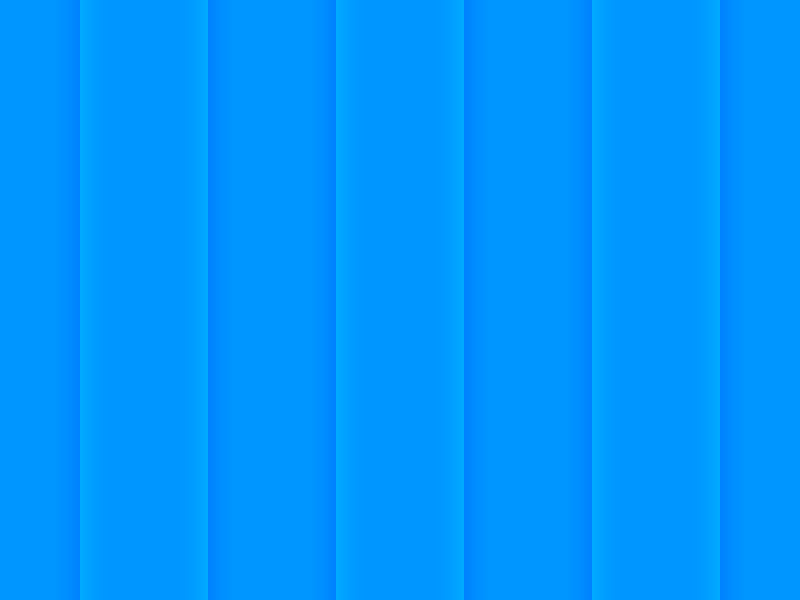
"Chromatic Craik-O'Brien-Cornsweet effect"
Areas flanked by orange borders appear to be tinted orange.
Copyright Akiyoshi Kitaoka 2009 (March 17)
 Is this correspondence perfect? Let's examine this issue.
Is this correspondence perfect? Let's examine this issue. 
The strongest brightness/lightness illusions, which I imagine, are the following three:
1. Anderson's illusion
2. White's illusion
3. Logvinenko's illusion
1. Anderson's illusion
Anderson, B. L. and Winawer, J. (2005) Image segmentation and lightness perception. Nature, 434, 79-83.
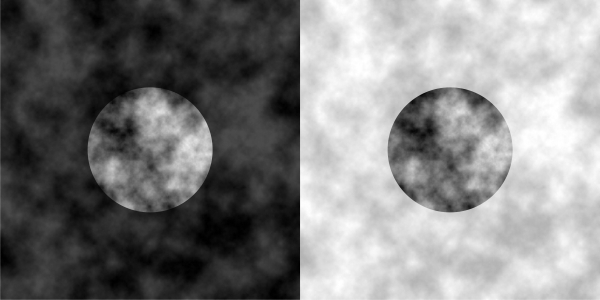
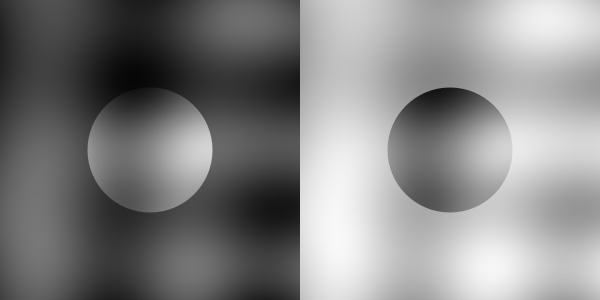
The inset surrounded by the darker background appears to be lighter than the same pattern surrounded by the brighter background.
See Bart's Homepage
(Lightness scission)
The chromatic Anderson's illusion is possible.
Wollschläger, D. and Anderson, B.L. (2009) The role of layered scene representations in color appearance. Current Biology, 19, 430-435.
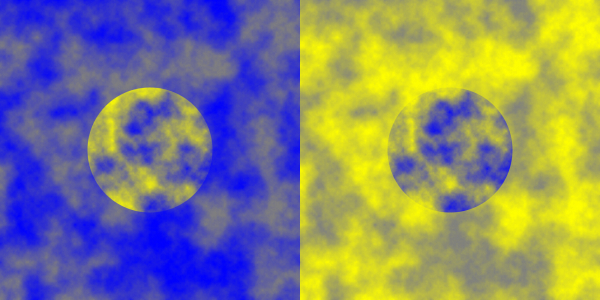
The inset surrounded by the bluish background appears to be yellowish while the inset surrounded by the yellowish background appears to be bluish.
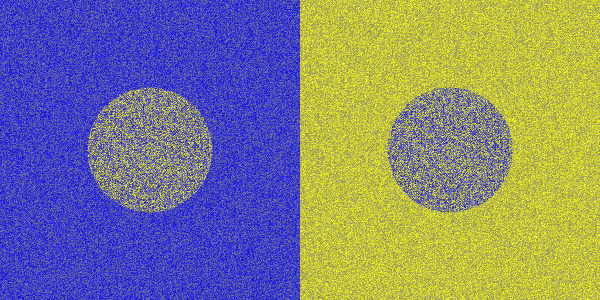
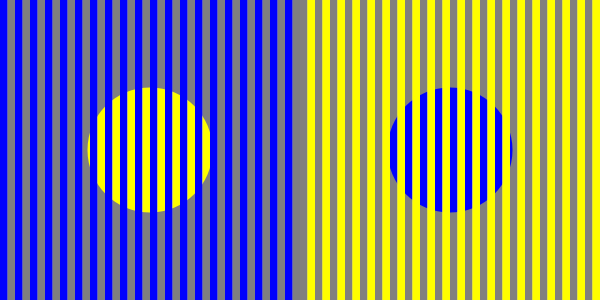
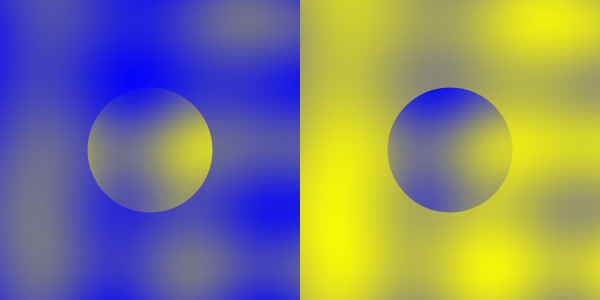
Chromatic Anderson's illusion does not depend on colour contrast, as shown
below.
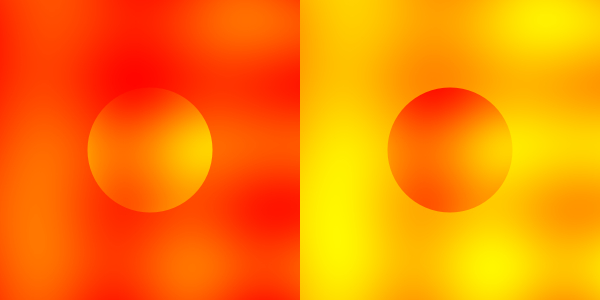
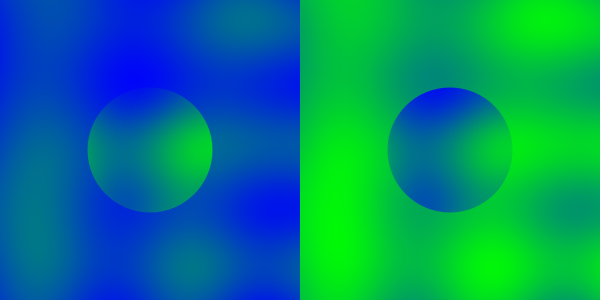
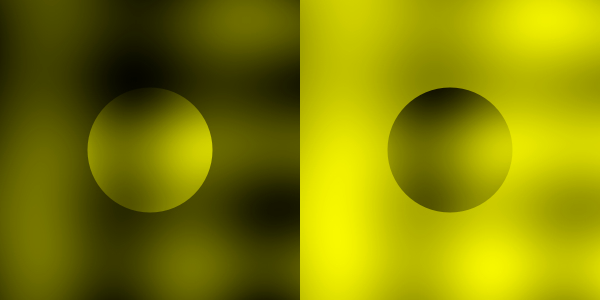
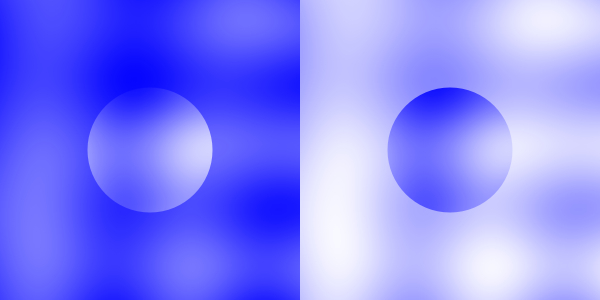
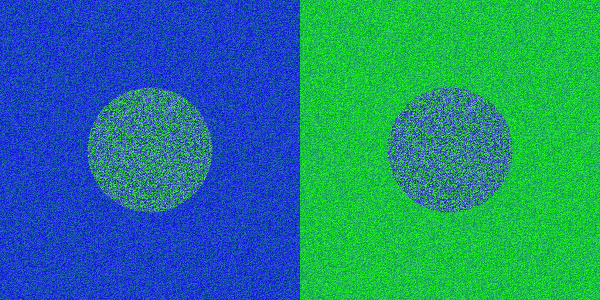
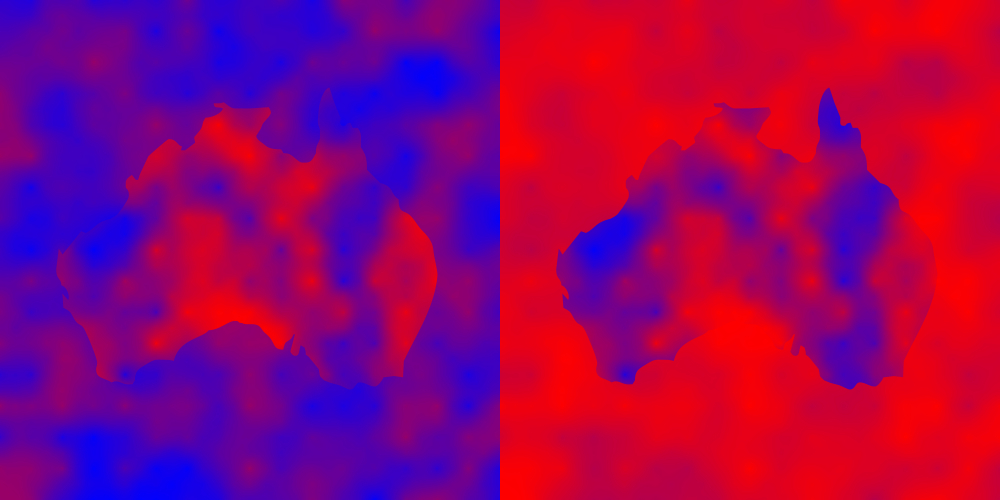
"Australia seen from space and dust storm over Australia"
The two Australia shapes are physically the same color and texture, but the left Australia appears to be reddish while the right one appears to be bluish with red dust storm blanketing it. This effect depends on the chromatic version of Anderson's illusion.
Copyright Akiyoshi .Kitaoka 2009 (September 25)
Anderson, B. L. and Winawer, J. (2005) Image segmentation and lightness perception. Nature, 434, 79-83.
Wollschläger, D. and Anderson, B.L. (2009) The role of layered scene representations in color appearance. Current Biology, 19, 430-435.
(Colour scission)
2. White's illusion
White, M. (1979) A new effect on perceived lightness. Perception, 8, 413-416.
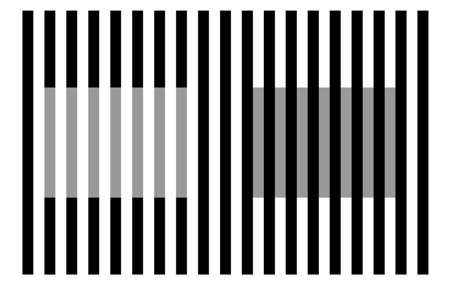
The left gray grating appears to be lighter than the right one, though they are the same luminance.
The chromatic White's illusion is possible. It is Munker's illusion.
Munker, H. (1970) Farbige Gitter, Abbildung auf der Netzhaut und übertragungstheoretische Beschreibung der Farbwahrnehmung. Habilitationsschrift, Ludwig-Maximilians-Universität, München.
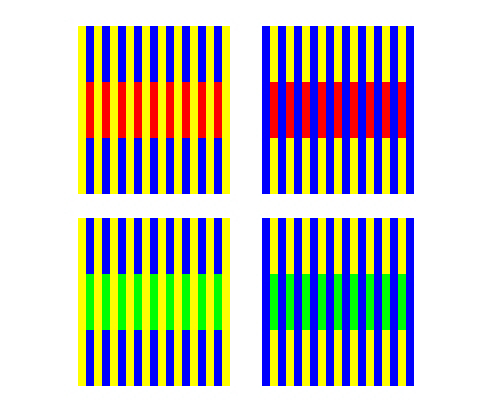
The orange and magenta gratings shown in the upper row are actually the same red, and the yellowish-green and cyan gratings displayed in the lower row are the same green.
White (1982) proposed another lightness illusion without T-junctions "White's dotted lightness illusion".
White, M. (1982) The assimilation-enhancing effect of a dotted surround upon a dotted test region. Perception, 11, 103-106.
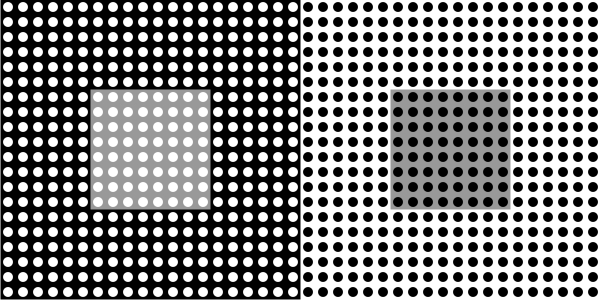
The left gray grating appears to be lighter than the right one, though they are the same luminance.
White's dotted colour illusion is possible.
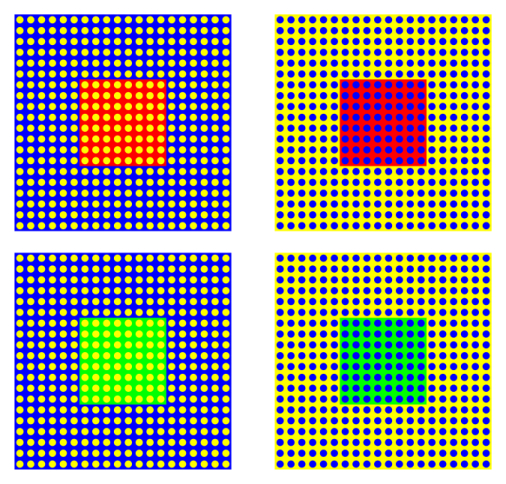
The orange and magenta squares shown in the upper row are actually the same red, and the yellowish-green and cyan squares displayed in the lower row are the same green.
I think the dungeon illusion (Bressan, 2001) and the De Valois-De Valois
illusion are essentially the same illusion as the two White's illusions.
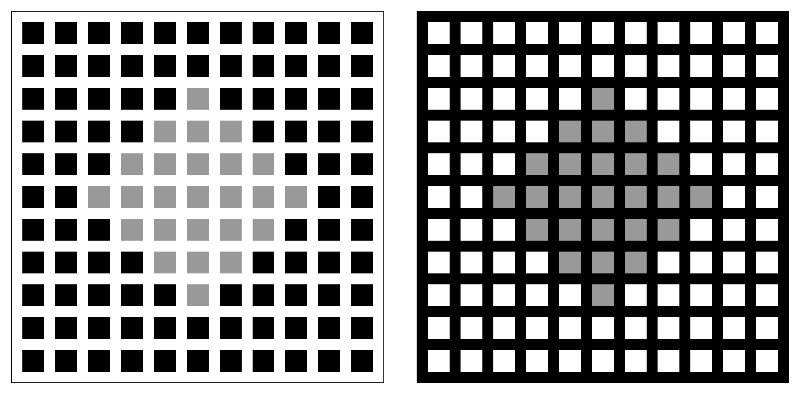
dungeon illusion (Bressan's illusion)
Bressan, P. (2001) Explaining lightness illusions. Perception, 30, 1031-1046.
The left gray squares appear to be lighter than the right ones, though they are the same luminance.
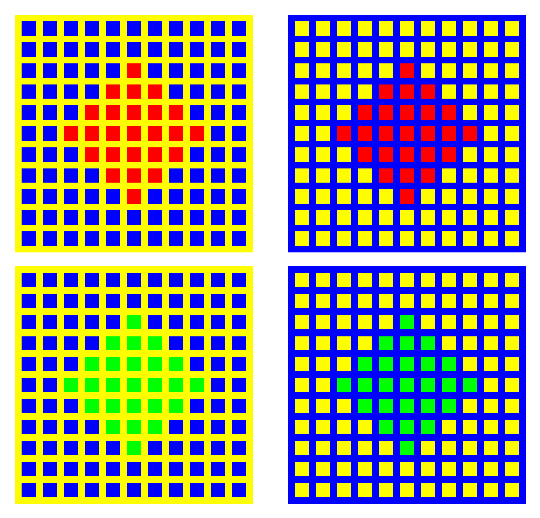
chromatic dungeon illusion
The orange and magenta squares shown in the upper row are actually the same red, and the yellowish-green and cyan squares displayed in the lower row are the same green.
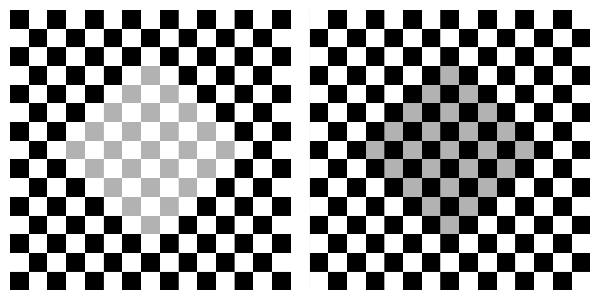
De Valois-De Valois illusion, achromatic version
De Valois, R. L. and De Valois, K. K. (1988) Spatial Vision. New York: Oxford University Press.
The left gray squares appear to be lighter than the right ones, though they are the same luminance.
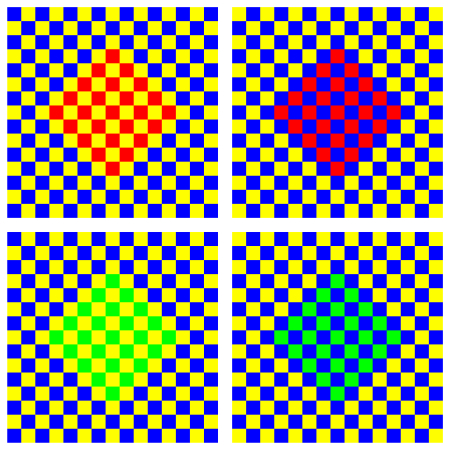
De Valois-De Valois illusion, chromatic version
De Valois, R. L. and De Valois, K. K. (1988) Spatial Vision. New York: Oxford University Press.
The orange and magenta squares shown in the upper row are actually the same red, and the yellowish-green and cyan squares displayed in the lower row are the same green.
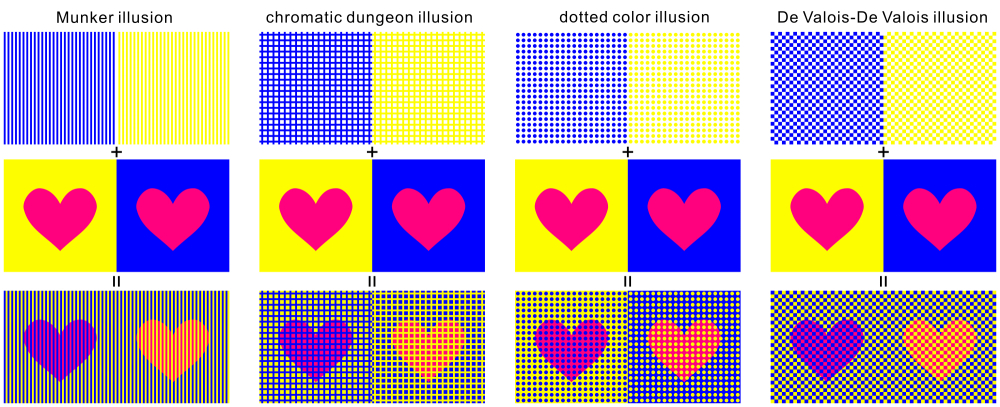
"How to make the four types of color illusions"
Hearts of the same color (R=255, G=0, B=127) appear to be pink or orange, induced by the Munker illusion, the chromatic dungeon illusion, the dotted color illusion, and the De Valois-De Valois illusion. To download high-resolution files, click here (8000 x 3262 pixel, 10MB)
Copyright Akiyoshi Kitaoka 2009 (June 1)
References
| Munker illusion | Munker, H. (1970) Farbige Gitter, Abbildung auf der Netzhaut und übertragungstheoretische Beschreibung der Farbwahrnehmung. Habilitationsschrift, Ludwig-Maximilians-Universität, München. |
| chromatic dungeon illusion | For the dungeon illusion: Bressan, P. (2001) Explaining lightness illusions.
Perception, 30, 1031-1046. Kitaoka (2007) http://www.psy.ritsumei.ac.jp/~akitaoka/saishin22e.html |
| dotted color illusion | For the dotted brightness illusion: White, M. (1982) The assimilation-enhancing effect of a dotted surround upon a dotted test region. Perception, 11, 103-106. Kitaoka (2008) http://www.psy.ritsumei.ac.jp/~akitaoka/color10e.html |
| De Valois-De Valois illusion | De Valois, R. L. and De Valois, K. K. (1988) Spatial Vision. New York: Oxford University Press. |
cf.
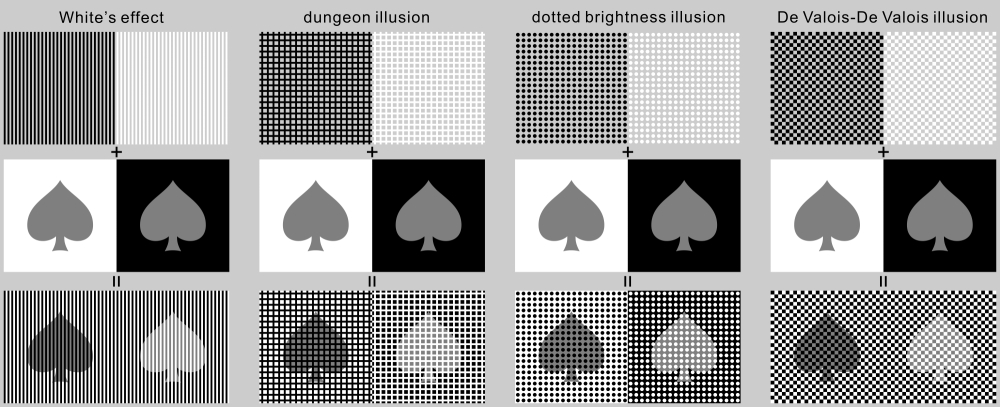
"How to make the four types of brightness/lightness illusions"
Spades of the same brightness (R=127, G=127, B=127) appear to be darker or brighter, induced by White's effect, Bressan's dungeon illusion, White's dotted brightness illusion, and the De Valois-De Valois illusion. To download high-resolution files, click here (8000 x 3262 pixel, 5MB)
Copyright Akiyoshi Kitaoka 2009 (June 1)
References
| White's effect (White's illusion) | White, M. (1979) A new effect on perceived lightness. Perception, 8, 413-416. |
| dungeon illusion | Bressan, P. (2001) Explaining lightness illusions. Perception, 30, 1031-1046. |
| dotted brightness illusion | White, M. (1982) The assimilation-enhancing effect of a dotted surround
upon a dotted test region. Perception, 11, 103-106. |
| De Valois-De Valois illusion | De Valois, R. L. and De Valois, K. K. (1988) Spatial Vision. New York: Oxford University Press. |
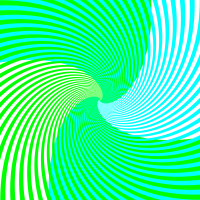 These illusions show a good correspondence between colour and lightness.
These illusions show a good correspondence between colour and lightness.
More info
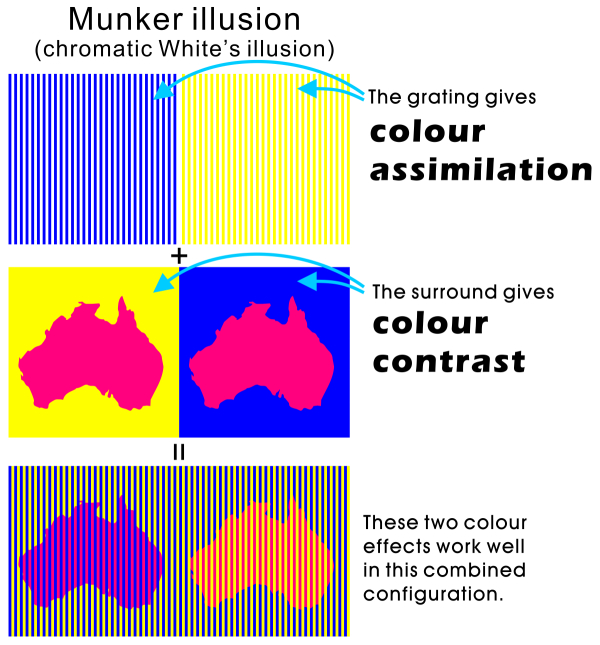
Left: Blue (assimilation) + Blue (contrast of yellow) = Blue induction; Right: Yellow (assimilation) + Yellow (contrast of blue) = Yellow induction
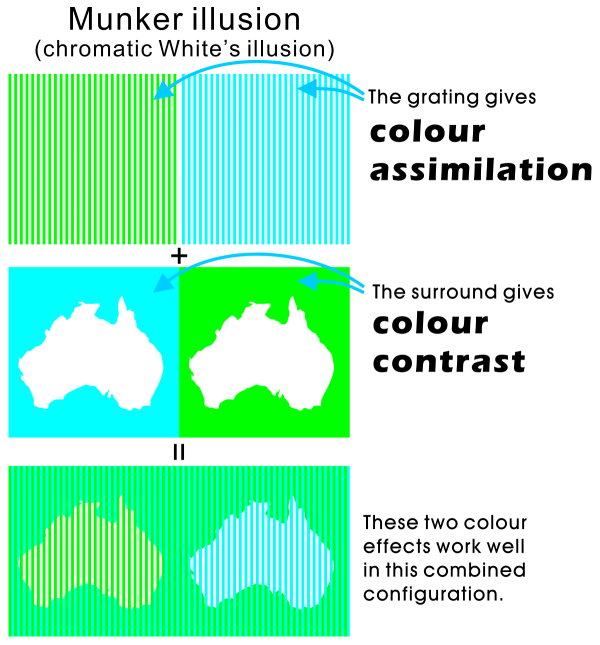
Left: Green (assimilation) + Red (contrast of cyan) = Yellow induction; Right: Cyan (assimilation) + Magenta (contrast of Green) = Blue induction
 OK?
OK?
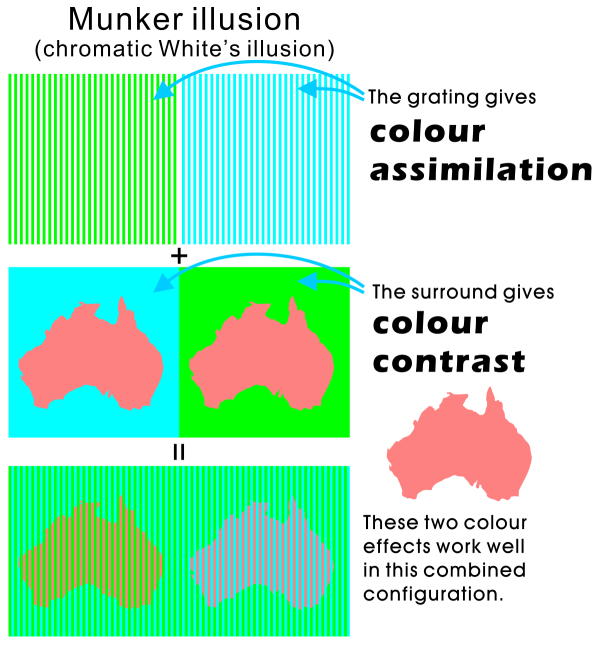
Left: Green (assimilation) + Red (contrast of cyan) + Light Red = Light Orange; Right: Cyan (assimilation) + Magenta (contrast of Green) + Light Red = Light Magenta
3. Logvinenko's illusion
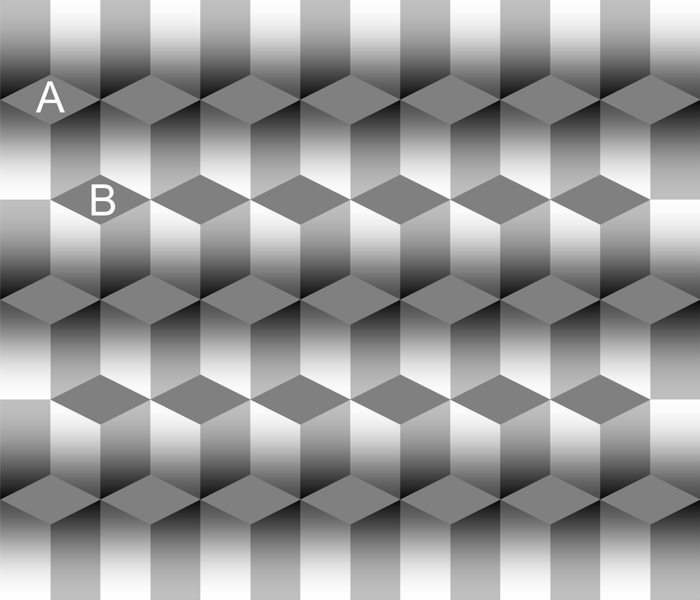
Logvinenko, A.D. (1999) Lightness induction revisited. Perception, 28, 803-816.
A appears to be lighter than B, though A = B in luminance! Incredible! Terrific! Wonderful!
I have managed to get a weak "chromatic" version of Logvinenko's
illusion.
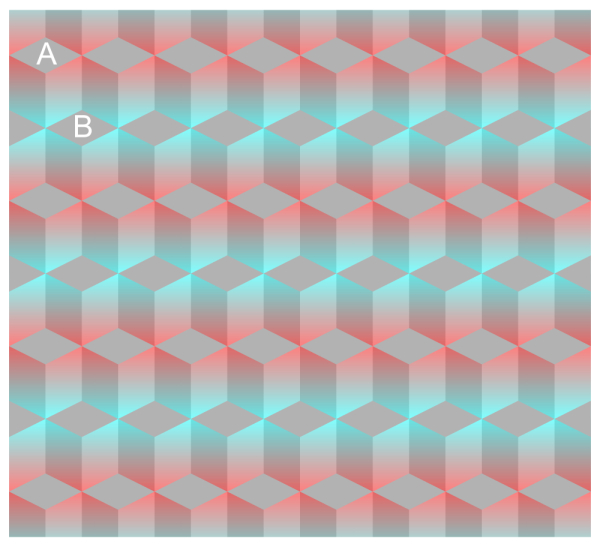
A appears to be bluish while B appears to be reddish, though A = B (30% black) in luminance. (for me, not so terrific...)
 I thought of Logvinenko's illusion and Adelson's illusions as phenomena
of kind of lightness constancy. This idea should have something wrong...
I thought of Logvinenko's illusion and Adelson's illusions as phenomena
of kind of lightness constancy. This idea should have something wrong...
 Is the colour illusion of colour constancy strong enough?
Is the colour illusion of colour constancy strong enough? 
The answer is yes! Please see the handout.

Copyright Akiyoshi .Kitaoka 2009 (September 22)
(The handout)
For the snake illusion (Adelson, 2000),
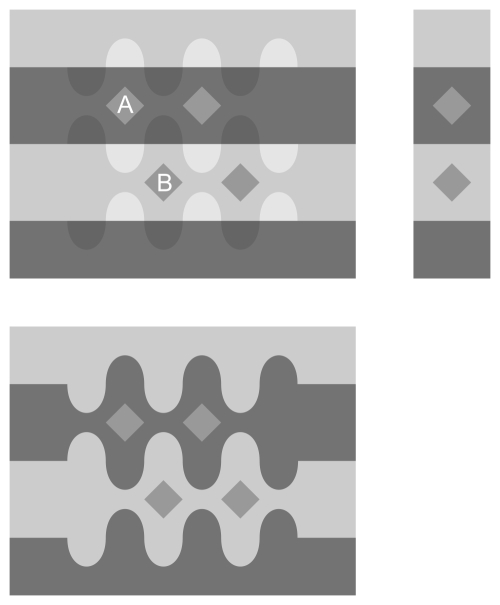
A appears to be lighter than B, though A = B in luminance! Incredible! Terrific! Wonderful!
Adelson, E. H. (2000) Lightness perception and lightness illusions. In M. Gazzaniga (Ed.), The New Cognitive Neurosciences, 2nd ed. Cambridge, MA: MIT Press (pp. 339-351).
Chromatic snake illusion is possible.
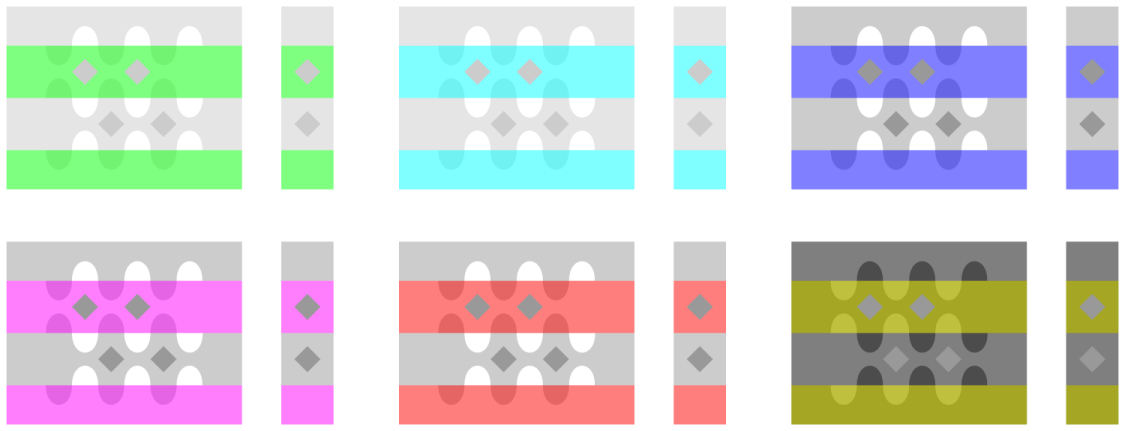
Diamonds are gray, but those embedded in the upper row in each block appear to be tinted.
I suddenly realized that colour constancy should be displayed
like these:
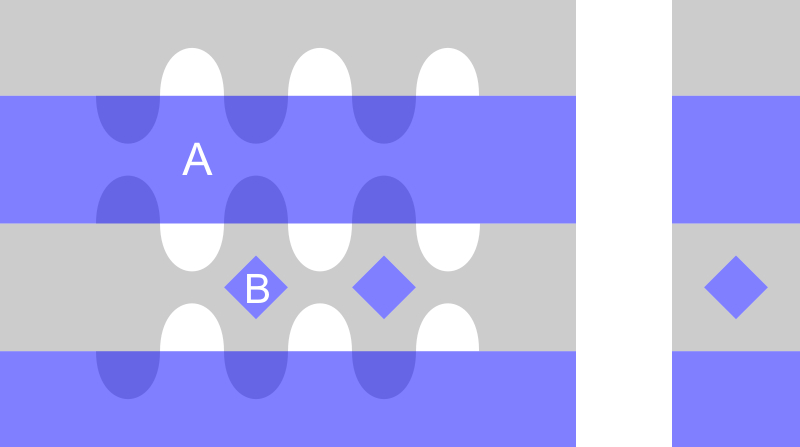
Area A appears to be kind of white and B appears to be bluish, though A = B in physical colour. This is just colour constancy!
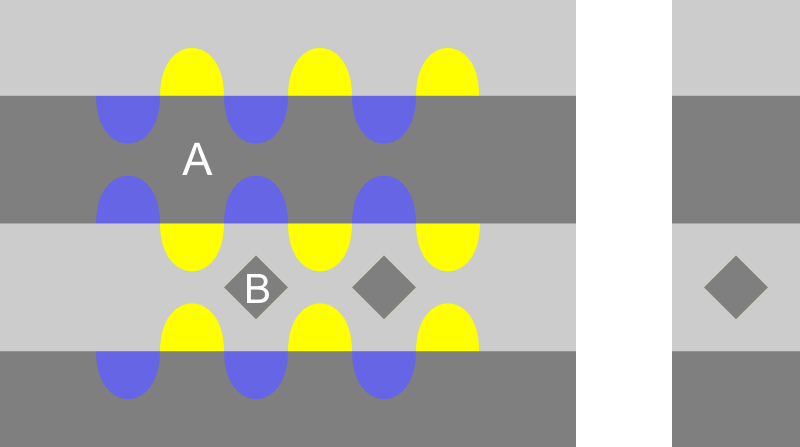
Area A appears to be yellowish and B appears to be gray, though A = B in physical colour. This is just colour constancy!
Lightness constancy should be displayed like this
in the Snake illusion configuration.
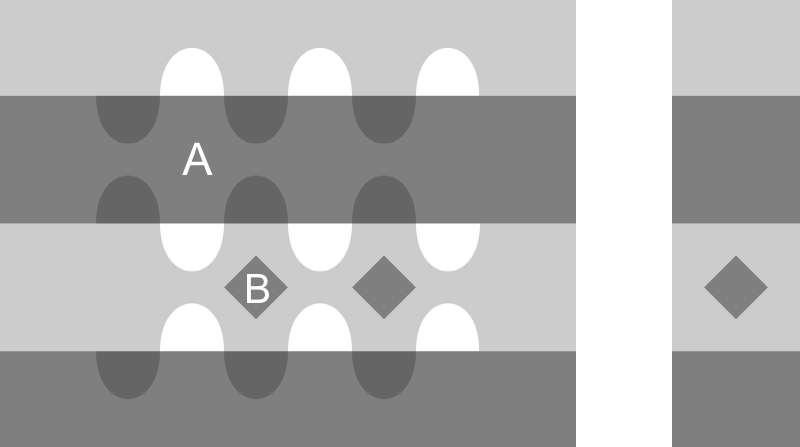
Area A appears to be kind of white and B appears to be dark gray, though A = B in luminance. This is just lightness constancy!
Lightness constancy should be displayed like this
in the Logvinenko's illusion configuration.
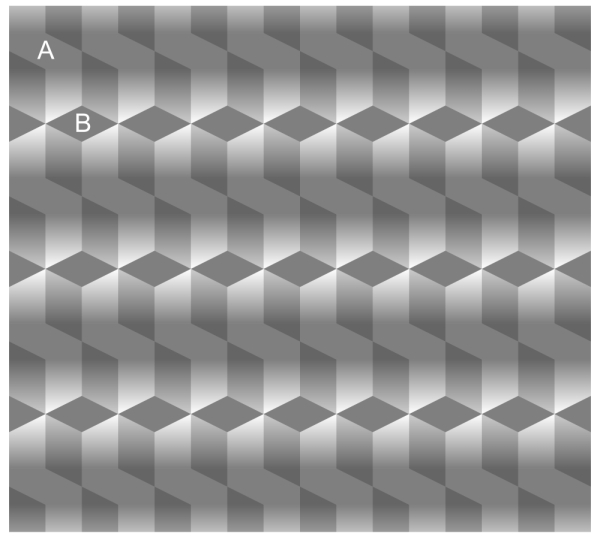
Area A appears to be kind of light gray and B appears to be dark gray, though A = B in luminance.
Colour constancy should be displayed like this
in the Logvinenko's illusion configuration.
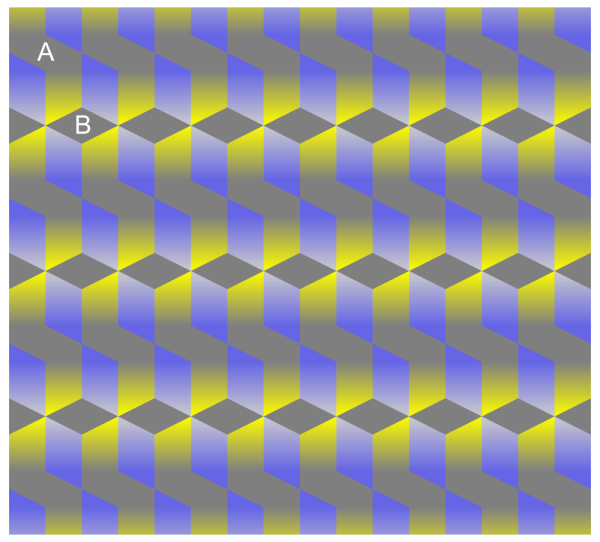
Area A appears to be kind of yellow and B appears to be gray, though A = B (50% black).
In my opinion, this image is less "terrific" than the original.
cf. Adelson's wall-of-blocks illusion version
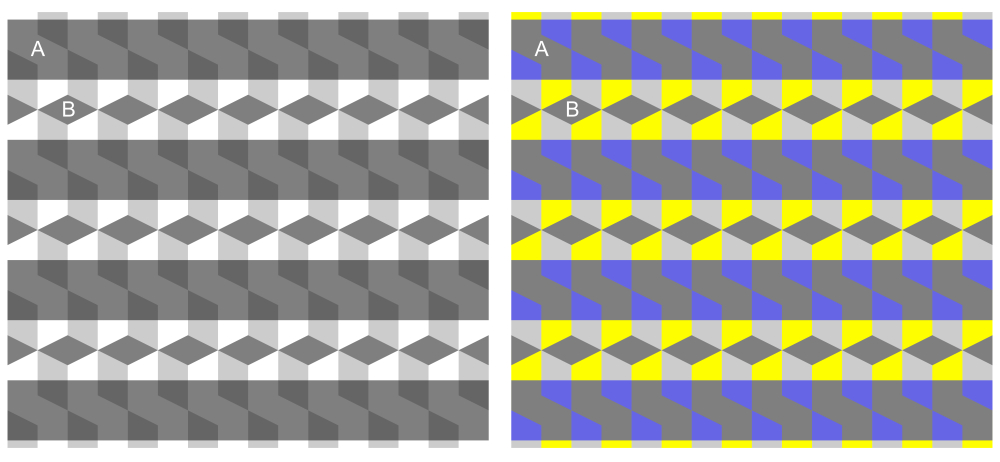
Thus, I guess that Logvinenko's illusion and Adelson's illusions are not simple phenomena of lightness constancy, but include other strong brightness effects, e.g. counterphase brightness induction.
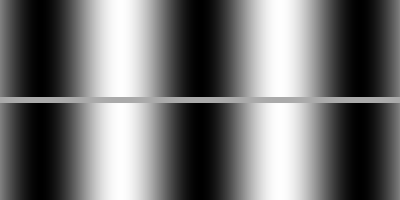
Grating induction (McCourt, 1982)
 I struggled to obtain the appropriate counterparts of Logvinenko's illusion
and Adelson's illusions in the colour domain, but I am sorry I failed.
I struggled to obtain the appropriate counterparts of Logvinenko's illusion
and Adelson's illusions in the colour domain, but I am sorry I failed.
Conclusion
 Correspondence between colour and lightness illusions is not perfect.
Correspondence between colour and lightness illusions is not perfect. 
There are many other colour illusions I did not show here.
For example,
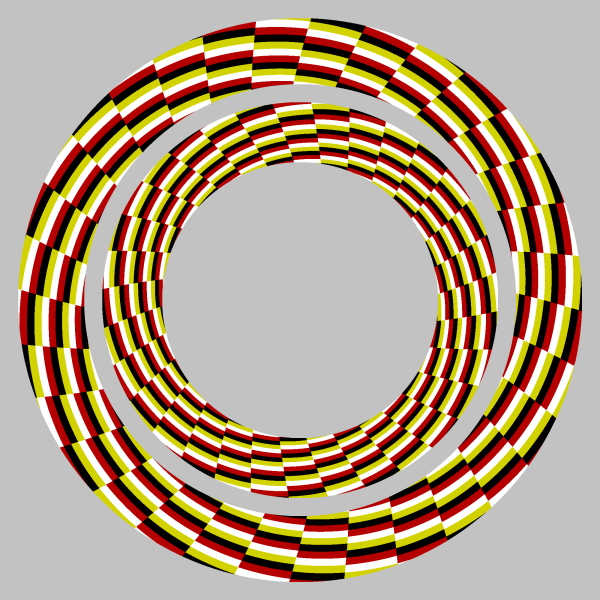 colour change illusion
colour change illusion
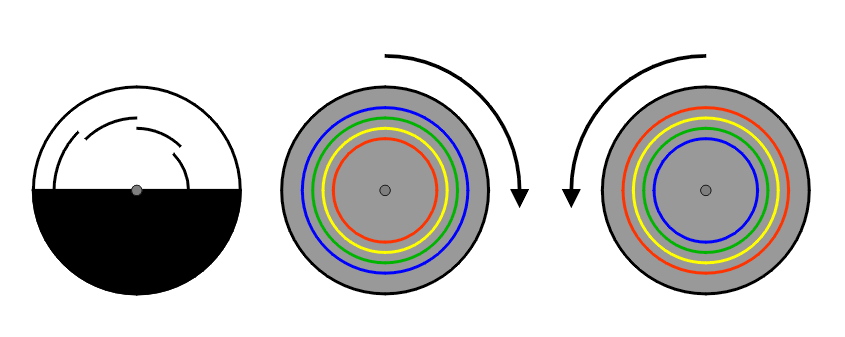 Benham top
Benham top
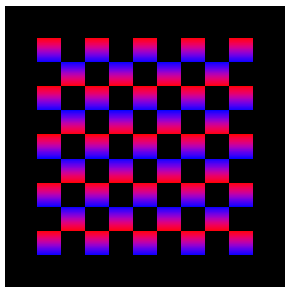 chromostereopsis
chromostereopsis
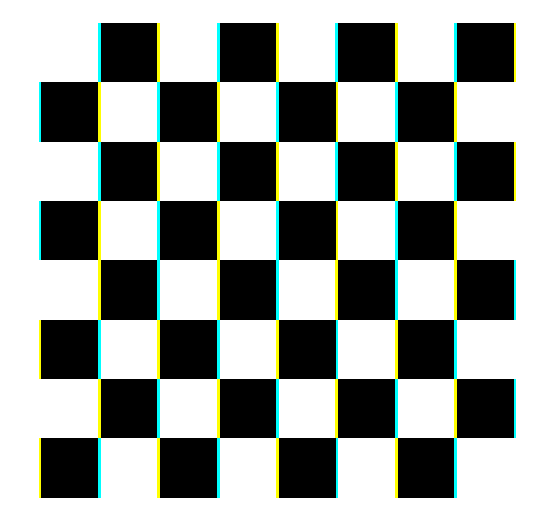 glasses-dependent colour induction
glasses-dependent colour induction
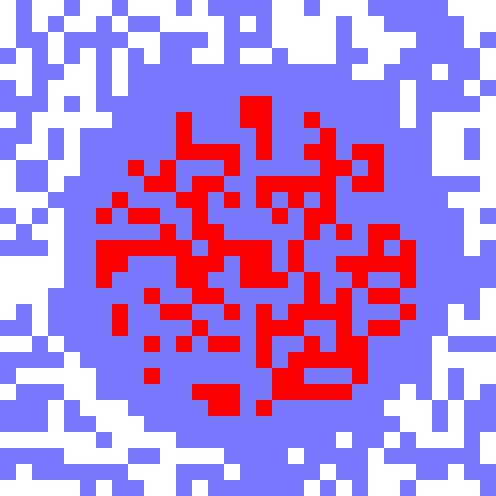 Colour-dependent drift illusion
Colour-dependent drift illusion
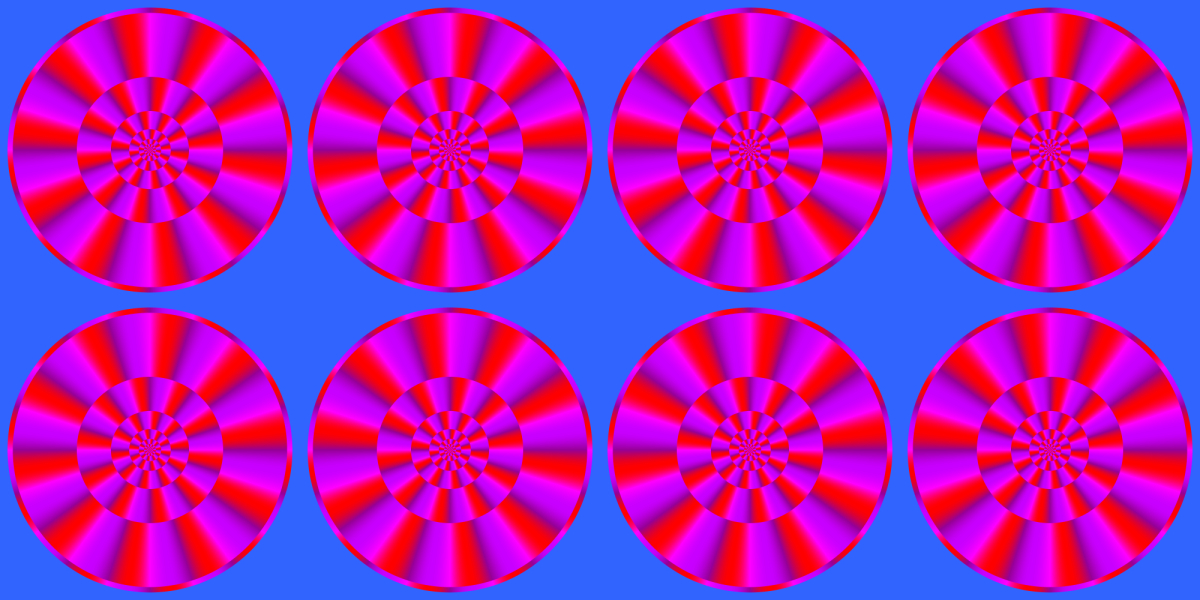
Colour-dependent version of the optimized Fraser-Wilcox illusion (Type
V)
But, time is over.
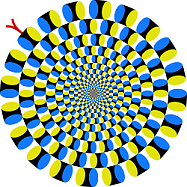 Thank you!
Thank you! 